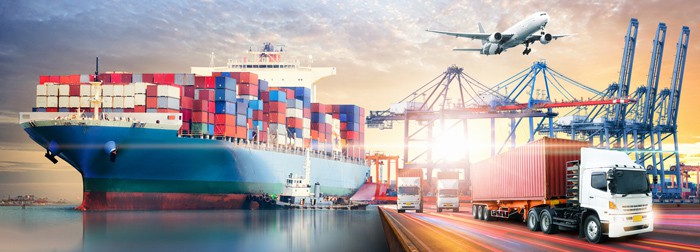Denis Doulgeropoulos
Your Financial Professional & Insurance Agent
Supply-Chain Chaos: Holiday Edition

The ports in California that receive about 40% of U.S. imports are now open 24/7, but workers still can’t keep pace with the rush of container ships arriving from overseas. In mid-November, there was a record backlog of vessels waiting offshore for more than two weeks to unload their cargo.2 Other U.S. ports are also congested, and severe shortages of truck drivers and warehouse workers have further slowed the distribution of goods throughout the nation. The bottlenecks caused finished goods as well as inputs and raw materials to be delayed.
Since spring of 2021, compounding supply-chain problems have led to increased freight and labor costs, delaying shipments, and leaving consumers with higher prices and fewer choices. In the autumn, logjams persisted and time was running out, prompting fears that U.S. retailers would not have enough inventory of goods to meet holiday demand.
The good news is that many businesses have responded nimbly to challenging conditions, while some consumers have also been proactive. Here’s a glimpse into how these kinks in the supply chain might affect your holiday shopping in 2021.
Are Retailers Ready?
In time for the holiday shopping season, many of the nation’s largest retailers prepared for problems and made sure their shelves were well stocked with a variety of products. In many cases, this required paying much higher freight costs to charter their own smaller ships or cargo planes so they could bypass clogged ports and make up for production delays.3
Smaller retailers may not be able to afford such costly measures, which puts them at a disadvantage. In a November survey, 48% of small businesses reported that supply-chain disruptions are having a significant negative impact on their holiday sales.4
The National Retail Federation predicts record holiday spending of 8.5% to 10.5% above 2020 levels due to an enthusiastic consumer demand. But retailers have also warned consumers that sporadic product shortages and shipping delays would continue and perhaps worsen later in the season.5
Poised to Spend
U.S. retail sales rose 1.7% in October, a surprisingly strong showing and the third monthly increase in a row.6 The potential for a more limited selection of some types of products has been widely reported, and it seems that consumers are paying attention. According to an annual NRF survey, a record share of consumers (49%) started their holiday shopping before November, and 36% did so to avoid missing the chance to buy key holiday items.7
The American public has extra money to spend this year after saving about $2 trillion during the pandemic. This was largely due to historic levels of economic relief provided by the federal government, along with fewer spending opportunities due to lockdowns.8 The recent rise in consumer spending bodes well for retailers and economic growth, but heavy demand also weighs on the supply chain and pushes up prices.
A Season of Inflation
It is possible that escalating prices for holiday gifts and basic needs will lead to the loudest “bah humbug” of the 2021 holiday season. With businesses paying more for the raw materials, packaging, labor, transportation, and fuel needed to produce and distribute products, a portion of the additional costs are being passed on to consumers.
According to the Consumer Price Index (CPI), prices across the U.S. economy increased 6.2% during the 12 months ending in October 2021 – the highest inflation rate in nearly 31 years. Grocery prices (food at home) rose 5.4% year over year, while prices for the category that includes meats, poultry, fish, and eggs spiked 11.9%.9
Prices for energy have risen 30% since October 2020, and natural gas, which many homes use to stay warm, has risen 28.1%. Gasoline prices rose nearly 50% over the prior 12 months, slamming the budgets of households who plan to drive to family gatherings over the holidays.10
Because supply-and-demand shocks have driven these sharp price increases, some economists still believe they are temporary and that inflation will moderate in 2022 as supply constraints ease.11 Of course, even short bursts of inflation can be especially painful for consumers with lower incomes and little or no savings, and no one knows for certain how long prices might stay elevated.
Shop Early or Be Flexible
In addition to being more expensive, some in-demand products may also be hard to find, and transportation bottlenecks aren’t the only issue impacting supplies. There is a global shortage of computer chips, which limits the production of all kinds of electronic devices, including cars, home appliances, laptops, smartphones, TVs, and gaming consoles. A COVID outbreak that shut down factories in Vietnam could affect the availability of some brands of sportswear, shoes, and accessories. Other reported shortages include jewelry, some popular toys and books, frozen turkeys, cardboard boxes needed for shipping, and Christmas trees, both real and artificial.12
If you need certain items for entertaining or have family members with specific gift requests, waiting until the last minute could be risky. As an alternative, you might want to consider shopping locally, being open to alternatives, and giving cash or gift cards to be spent later.
Projections are based on current conditions, are subject to change, and may not come to pass.
1) Consumer Reports, October 20, 2021
2) Bloomberg, November 13, 2021
3) The Wall Street Journal, October 10, 2021
4) National Federation of Independent Business, November 3, 2021
5, 7) National Retail Federation, November 16, 2021
6) U.S. Census Bureau, 2021
8) Bloomberg, November 16, 2021
9–10) U.S. Bureau of Labor Statistics, 2021
11) Moody’s Analytics, November 18, 2021
12) CBS News, November 18, 2021
This information is not intended as tax, legal, investment, or retirement advice or recommendations, and it may not be relied on for the purpose of avoiding any federal tax penalties. You are encouraged to seek guidance from an independent tax or legal professional. The content is derived from sources believed to be accurate. Neither the information presented nor any opinion expressed constitutes a solicitation for the purchase or sale of any security. This material was written and prepared by Broadridge Advisor Solutions. © 2021 Broadridge Financial Solutions, Inc.
